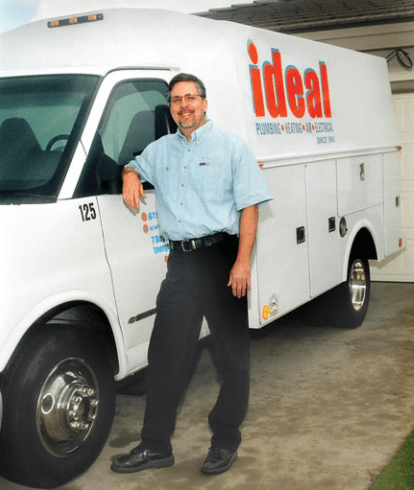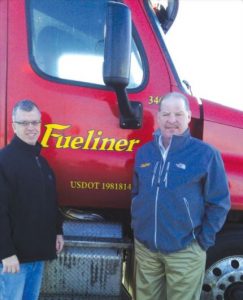IDEAL PLUMBING, SAN DIEGO CALIFORNIA 30 VEHICLES
USING TELEMATICS SYSTEMS TO INCREASE PRODUCTIVITY
Five diverse fleets weigh in on how they use GPS tracking, vehicle diagnostics, electronic communication and vehicle and driver data to automate tasks and improve performance.
Some 20% of North American fleets currently employ a telematics system, according to ABI Research. As telematics systems become more robust, fleets large and small are installing them in greater numbers and using them for a greater number of fleet management tasks.
From managing route changes on the fly to automating time-consuming tasks to diminishing unscheduled downtime and communicating with drivers more efficiently, these five fleets share how they take advantage of their systems to achieve a key benefit of telematics — increasing worker and vehicle productivity.
Ideal Plumbing has a small fleet that covers all of San Diego County, an area larger than the states of Rhode Island and Delaware combined. Because technicians have round-the clock control of their vehicles, monitoring vehicle usage is essential, says Don Teemsma, president. The company uses the FleetBoss Series 6000 GPS fleet management. In addition to real-time tracking and routing of the company’s 30 trucks, Teemsma uses the system’s “dashboard” on his computer to view vehicle and driving performance such as speed, rate of acceleration, idle time and harsh braking and cornering.
“The driving habits of the technicians are displayed very easily,” he says. “You can see who your biggest offenders and best drivers are.” Not only is the company’s home base alerted to dangerous driving, but technicians also experience an in-cab audible warning if they drive more than 73 miles per hour. This has resulted in a noticeable reduction in speeding,” Teemsma says.
While management can see the scores of all drivers and track their overall improvement, drivers get a hard copy of their report with only their individual performance. “We don’t call out the worst drivers in front of their peers,” Teemsma says. “We counsel them into better driving habits and give them measurements in order to work toward improvement.”
The system also measures miles driven, which turns up trip irregularities, but in general pushes the technicians to be more efficient. “We don’t see the inappropriate use of company vehicles like we used to,” Teemsma says, “…such as after-hours driving and extra-long lunch breaks.”
“From an owner’s perspective, I’m really driven to improve their efficiency and safety in the vehicles,” Teemsma says. “The fact that we can see their driving habits puts a sharper focus on being safe, efficient and courteous drivers. We can see a trend of improvement. It is fairly remarkable.”
And the result has been improvements in each of these metrics. “All of these things translate into better gas mileage and less wear and tear on the vehicles,” he says, adding that the next step is to implement a system to reward drivers for their better performance.



